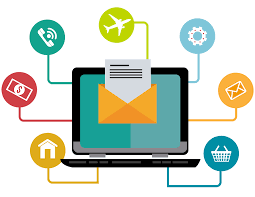
Understanding Behavioral Data
Behavioral data refers to the information collected about how users interact with your website, emails, and other digital touchpoints. This includes:
- Website Activity: Pages visited, time spent on each page, and click patterns.
- Email Interaction: Open rates, click-through rates, and response actions.
- Purchase Behavior: Browsing history, cart additions, and purchase frequency.
Why Behavioral Data Matters
Behavioral data offers insights into customer preferences, interests, and behaviors. By analyzing this data, you can tailor your email content to meet the specific needs and desires of your audience. Here’s why it’s crucial:
- Enhanced Personalization: Create targeted email campaigns based on individual user behavior.
- Increased Engagement: Craft emails that resonate with user interests, leading to higher open and click-through rates.
- Improved Conversion Rates: Drive more relevant offers and content to users who are more likely to convert.
Steps to Utilize Behavioral Data in Your Bulk Email Marketing Strategy
- Collect and Analyze Data
Start by gathering behavioral data from various sources, including your website analytics, email marketing platform, and CRM system. Use tools like Google Analytics, email tracking software, and customer data platforms (CDPs) to collect this information. Analyze the data to identify patterns and trends.
- Segment Your Audience
Use the insights gained from your data analysis to segment your email list into distinct groups. Segmentation can be based on:
- Behavioral Triggers: Actions such as recent website visits or cart abandonment.
- Purchase History: Frequency and types of purchases made.
- Engagement Levels: How often users open and interact with your emails.
Creating well-defined segments allows you to deliver more relevant and personalized content to each group.
- Create Targeted Content
Develop email content that speaks directly to the interests and behaviors of each segment. For example:
- Abandoned Cart Emails: Send reminders with personalized product recommendations based on items left in the cart.
- Re-engagement Campaigns: Target users who haven’t interacted with your emails in a while with special offers or updates.
- Product Recommendations: Use browsing and purchase history to suggest products or services that align with user preferences.
- Automate Email Campaigns
Implement automated email workflows to send messages based on specific behavioral triggers. Automation ensures timely and relevant communication, enhancing the overall customer experience. Consider automating:
- Welcome Sequences: For new subscribers or customers.
- Post-Purchase Follow-ups: To thank customers and suggest related products.
- Behavioral Triggers: Emails based on actions like downloading a resource or signing up for a webinar.
- Test and Optimize
Continuously test different elements of your email campaigns, such as subject lines, content, and send times. Use A/B testing to determine which variations perform best. Analyze the results and optimize your campaigns based on data-driven insights.
- Monitor and Adjust
Regularly review the performance of your email campaigns using metrics such as open rates, click-through rates, and conversion rates. Adjust your strategy based on what the data reveals to ensure ongoing improvement and effectiveness.
Best Practices for Using Behavioral Data
- Respect Privacy: Ensure compliance with data protection regulations like GDPR and CCPA. Always obtain consent before collecting and using behavioral data.
- Maintain Relevance: Avoid overloading users with too many emails. Focus on delivering value through relevant and timely content.
- Continuously Update: Behavioral data can change over time. Regularly update your data and adjust your email marketing strategy accordingly.
Conclusion
Incorporating behavioral data into your bulk email marketing strategy is a game-changer. By understanding user behavior and tailoring your email campaigns accordingly, you can achieve higher engagement, improved conversion rates, and a more personalized customer experience. Follow these steps, adhere to best practices, and watch your email marketing efforts thrive.
By utilizing behavioral data effectively, you can create a powerful email marketing strategy that resonates with your audience and drives meaningful results.
About Us:
SpaceEdge Technology appears to be a term that might refer to a company, concept, or technology related to space exploration or utilization. However, without further context, it’s challenging to provide specific information.